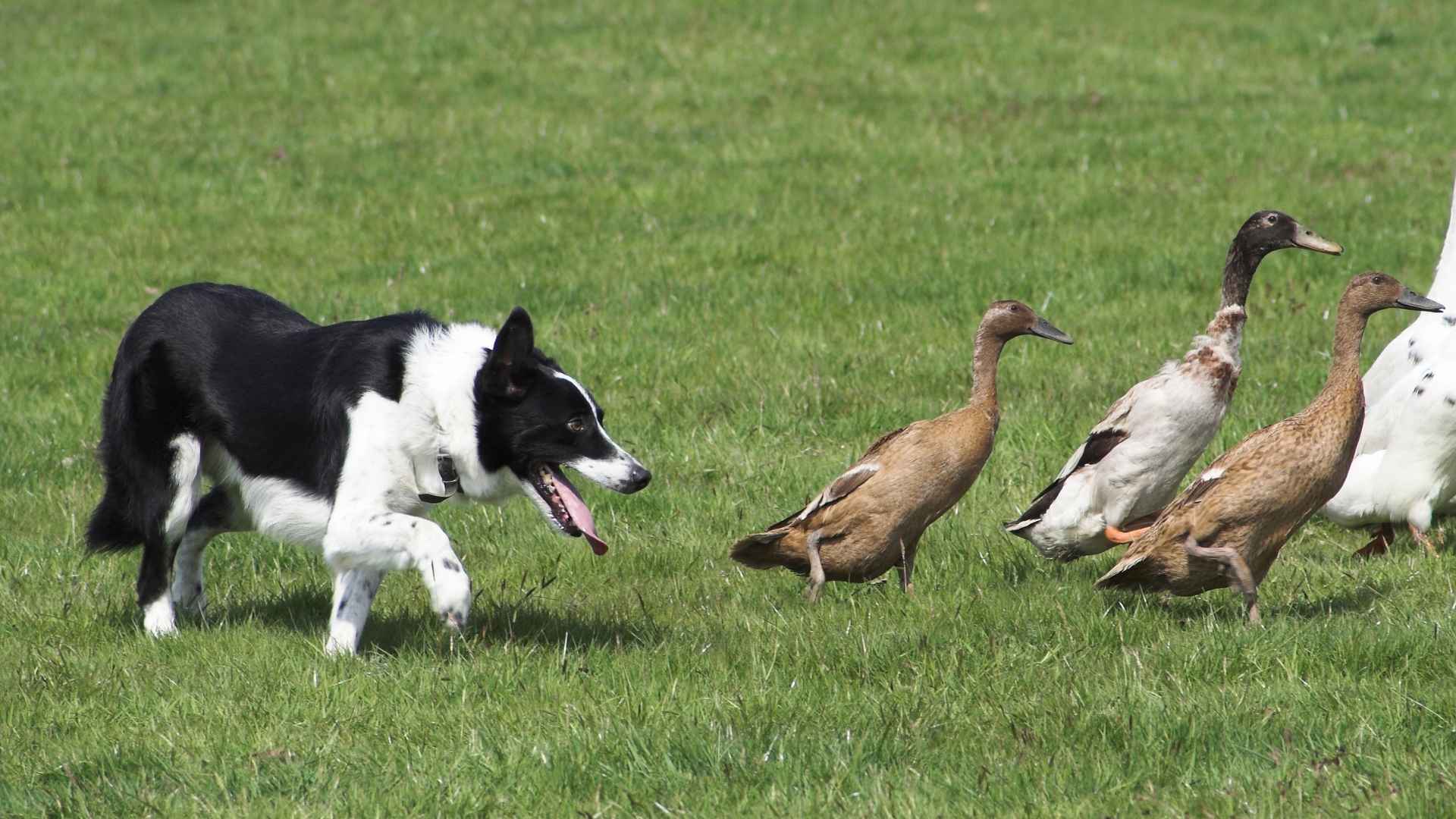If you think herding is just for sheepdogs and cowhands, think again. There’s a special squad of canines out there with a unique skill: duck wrangling. Yes, really—duck herding is a thing, and some breeds are absolute pros at it.
These dogs are quick on their paws, laser-focused, and smart enough to outwit even the sassiest of birds. Duck herding requires a unique blend of precision, patience, and personality—and these breeds have it all.
Whether you’re a hobby farmer, a homesteader, or someone who just really loves watching organized chaos, you’ll be amazed by what these dogs can do. From the classic Border Collie to lesser-known herders with serious instincts, this list is for anyone fascinated by the feathered-and-furry side of dog training.
Ready to meet the duck’s biggest nemesis (and the farmer’s best friend)? Let’s dive into the breeds that rule the barnyard, one quack at a time.
Dog Breeds that Herd Ducks
1. Pembroke Welsh Corgi
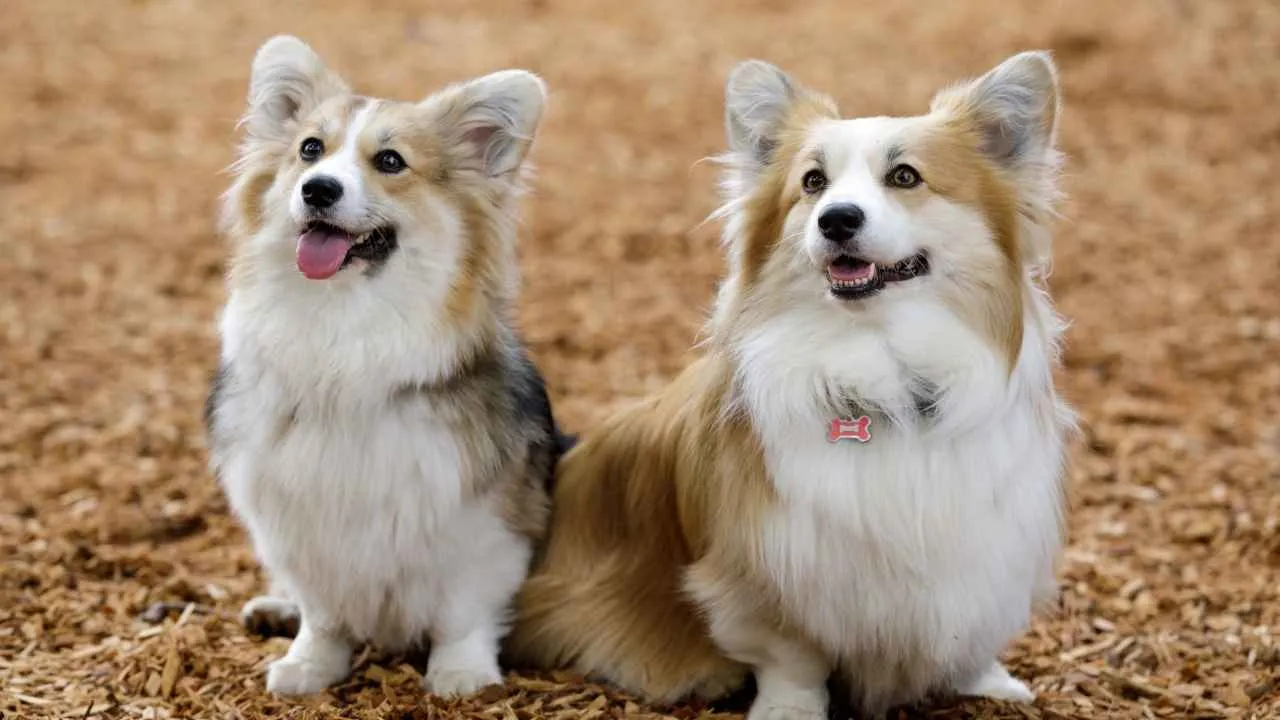
Height: 10–12 inches | Weight: 25–30 pounds
Don’t let their short legs fool you—Pembroke Welsh Corgis are herding powerhouses packed into a compact, adorable package.
Known for their expressive faces and fox-like ears, these dogs have a big personality and even bigger work ethic. Originally bred to herd cattle and sheep, Corgis are masters at controlling livestock, including ducks, by nipping and quick movements.
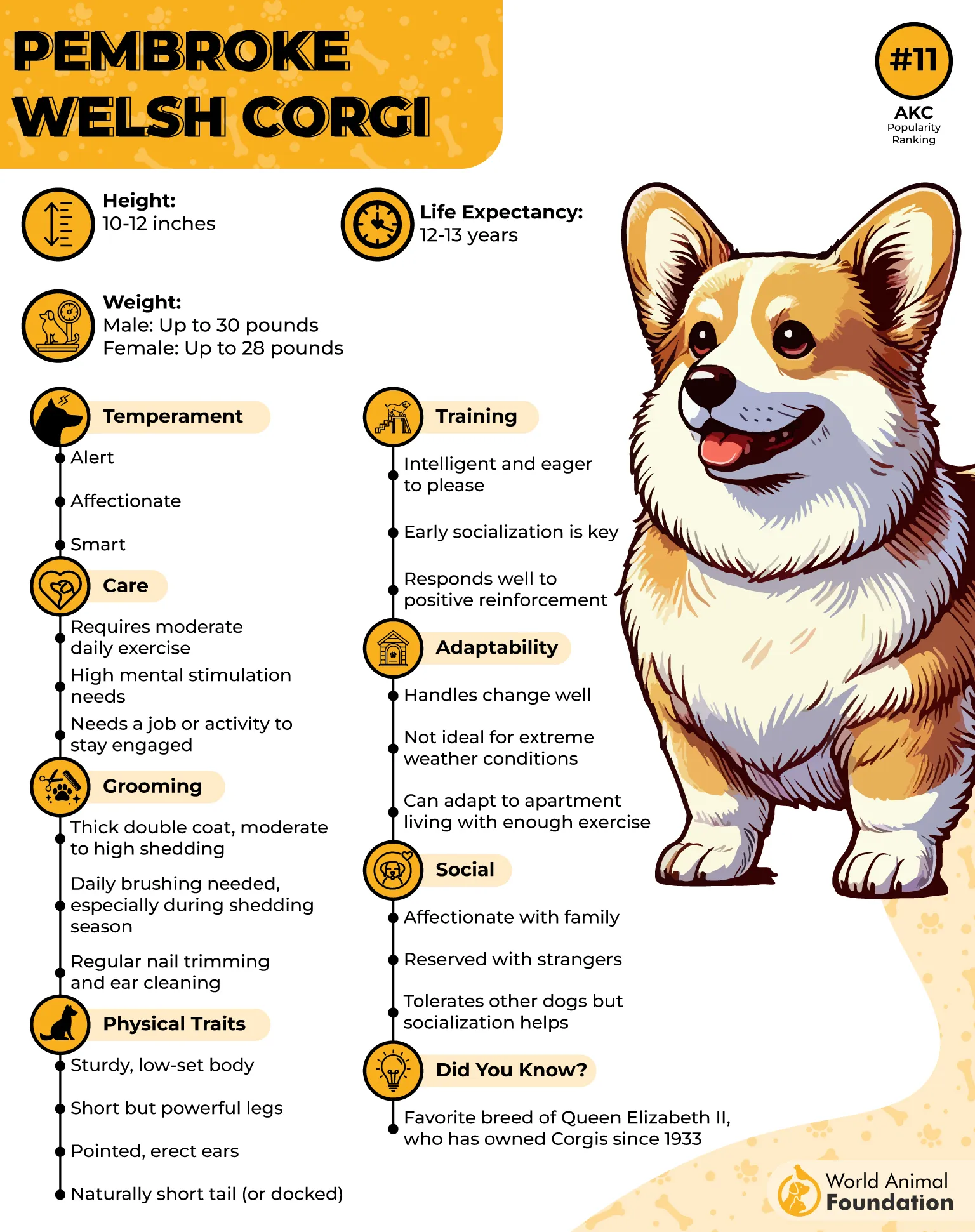
Loyal, spunky, and surprisingly independent, Pembroke Welsh Corgis are charming little dynamos that can adapt to just about any lifestyle—whether it’s city apartment living or roaming wide-open country spaces.
Corgis tend to get along well with other pets, and their playful, affectionate personality makes them wonderful companions for kids. With their big ears, expressive eyes, and can-do attitude, it’s no wonder Corgis have captured hearts all over the world.
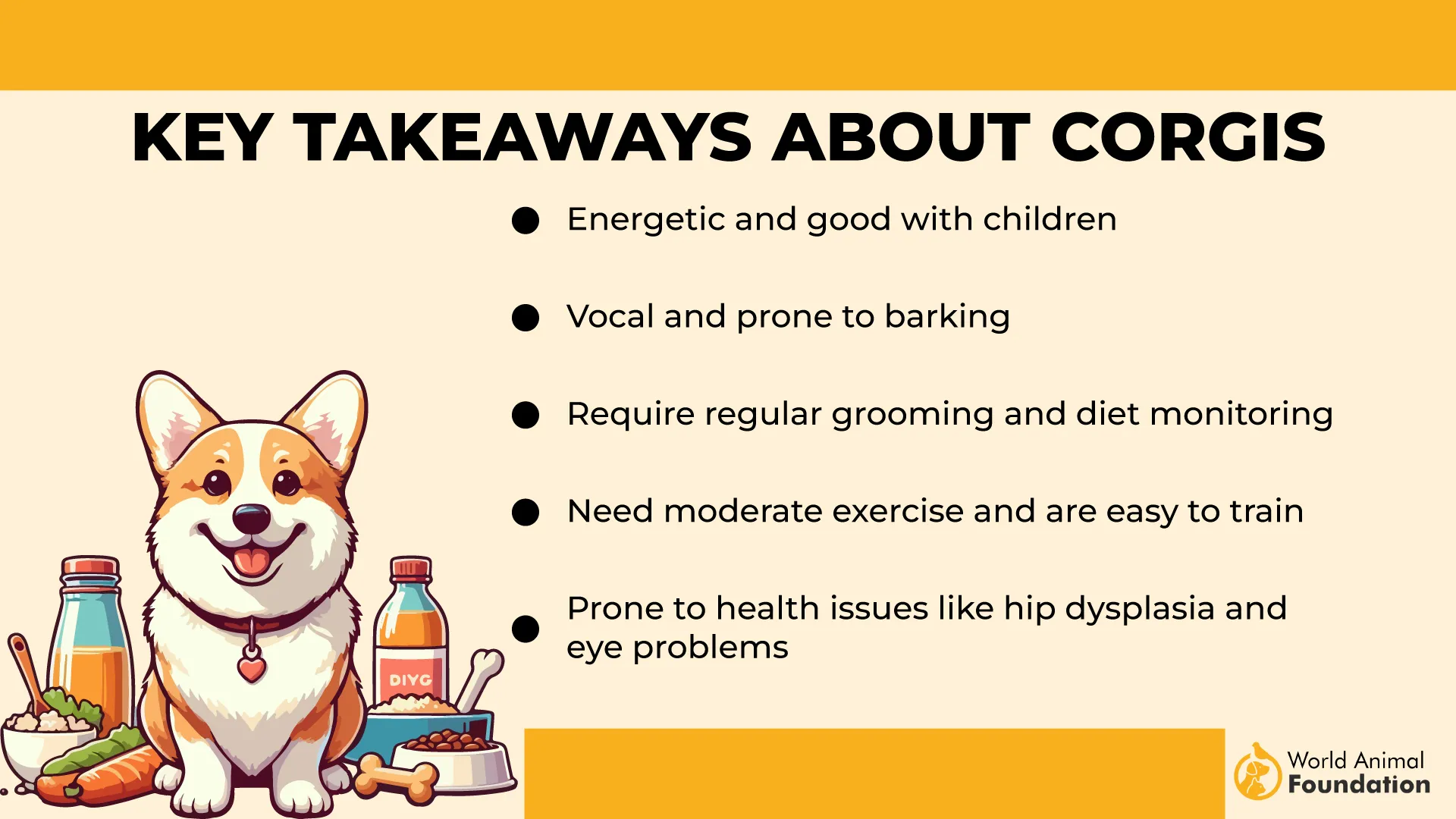
Why Corgis are herding heroes:
Compact size with lightning-fast agility
Super smart and eager to please (and to outwit you sometimes!)
Fearless and alert, always ready to take charge
Loving family companions who thrive on attention and activity
These short-legged cuties need more than just a daily walk—they crave mental stimulation, too. A job, puzzle toy, or training game keeps their sharp minds busy and helps curb pesky behaviors like digging or chewing out of boredom.
Corgi mood: “I may be small, but I’m the boss around here.”
2. Border Collie
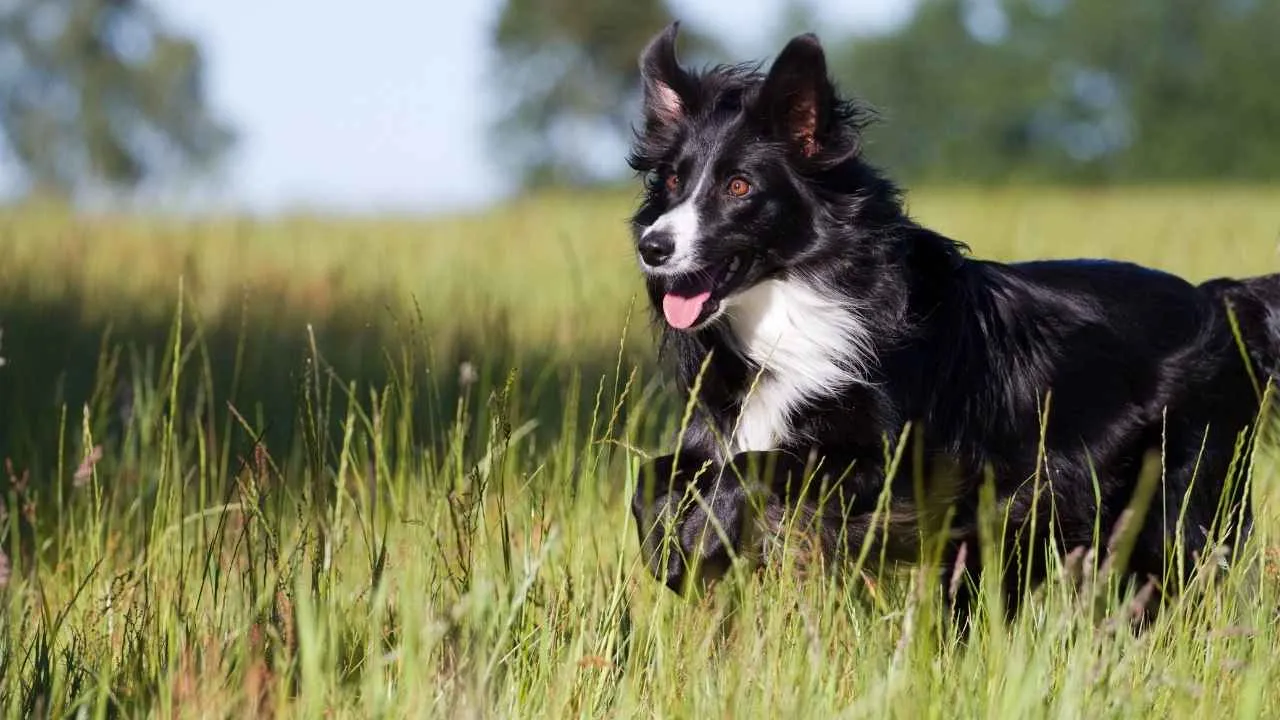
Height: 18–22 inches | Weight: 30–45 pounds
Border Collies are basically the Einsteins of the dog world—if Einstein had boundless energy and a passion for herding. Famous for their intense stare (the “herding eye”), these dogs are built to move livestock with precision and style, whether it’s sheep, ducks, or anything else needing a nudge in the right direction.
While Border Collies are still hard at work herding on farms around the world, they’ve also earned a place as a popular family pet, especially for those who can keep up with their boundless energy and brilliance.
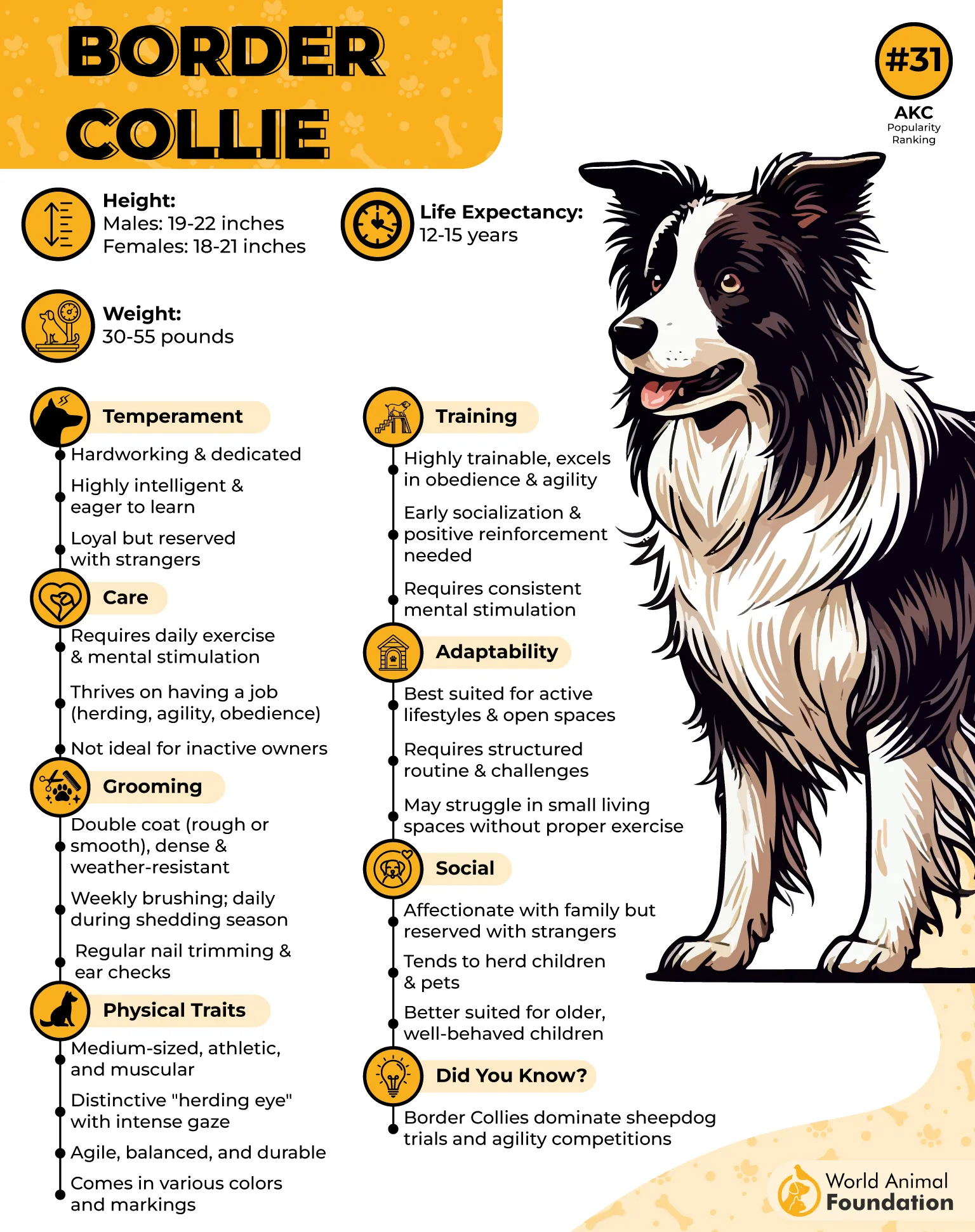
Often ranked as the smartest dog breed, Border Collies need more than a backyard to run in—they thrive on mental challenges and tasks that give them purpose.
Why Border Collies are herding royalty:
Razor-sharp intelligence combined with incredible agility
Tireless workers who thrive on challenges and learning new tasks
Highly trainable and responsive—think of them as your canine co-pilot
Loyal companions that form deep bonds with their humans
Petplan noted this breed thrives on praise and responds exceptionally well to positive reinforcement—so keep those training treats handy and be ready to celebrate every small win!
Without enough stimulation, these clever canines may create their own fun… which often involves chewing, digging, or redecorating your home with fur and chaos.
But with the right balance of exercise, training, and enrichment, Border Collies make outstanding companions for active singles or families who love a dog that can match their energy step for step.
Border Collie mindset: “Give me a job, and I’ll do it better than you imagined.”
3. Catahoula Leopard Dog
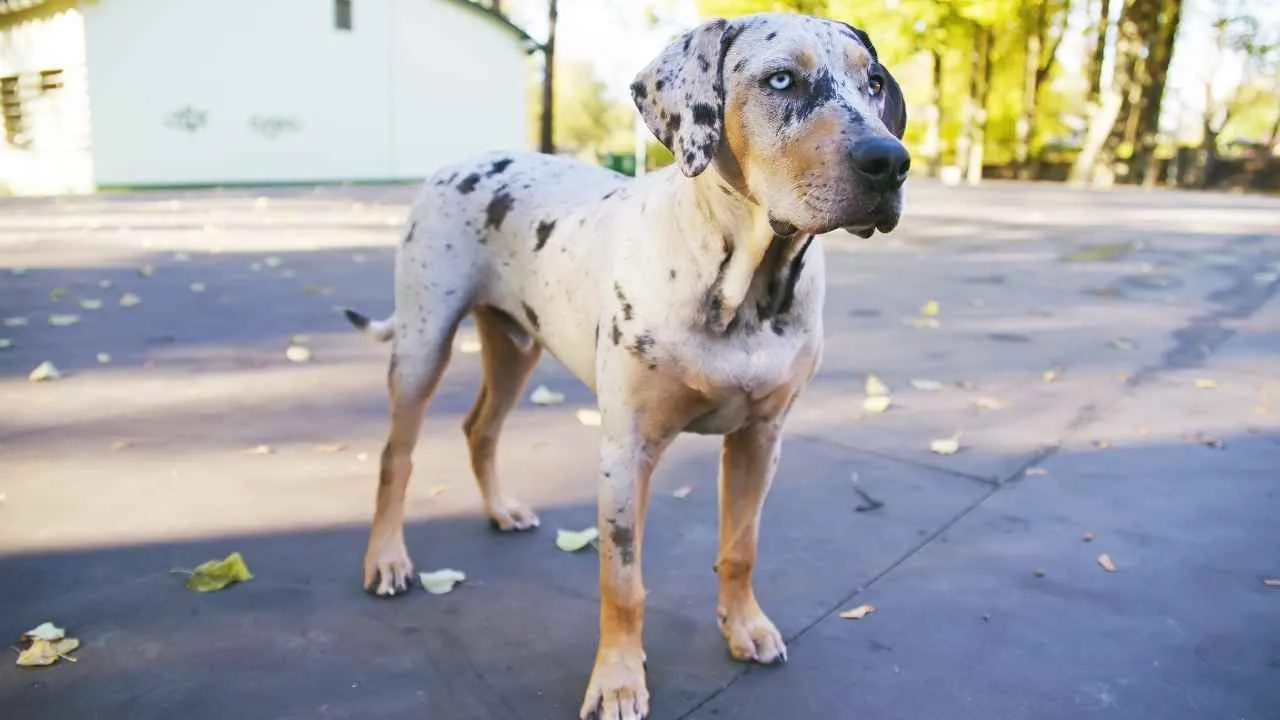
Height: 20–26 inches | Weight: 50–95 pounds
With a coat as wild as their personality and eyes that can mesmerize you, the Catahoula Leopard Dog is a true all-rounder.
Catahoula Leopard Dogs are true head-turners, often sporting stunning brindle or merle coats paired with piercing blue eyes. With their muscular build and confident presence, they’re as powerful as they are beautiful. But don’t let their rugged looks fool you—these dogs form deep bonds with their people and can be incredibly loving and loyal companions.
This American native breed is known for its herding skills, especially with cattle and ducks, and for being a loyal, hard-working partner. Tough and resilient, they handle rough terrain and challenging tasks with ease.
Why Catahoulas stand out in the herding world:
Unique, leopard-like coat and striking eyes—talk about natural charisma
Highly intelligent and independent thinkers
Hardy, energetic, and built for work and adventure
Protective yet affectionate with family and friends
That said, their strong-willed and independent nature means they require consistent training and firm, positive guidance from experienced pet parents. When given the structure and stimulation they need, Catahoulas thrive in active homes where they can put both their brains and brawn to good use.
Catahoulas do best in homes with plenty of space to roam—ideally with a securely fenced yard where they can burn off their boundless energy. These athletic, working dogs need a job (or at least an intense game of fetch), and without enough physical and mental stimulation, they can turn to destructive habits like digging or chewing just to keep themselves entertained.
Catahoula vibe: “I’m a wild spirit with a heart of gold—and I get the job done.”
4. Australian Shepherd
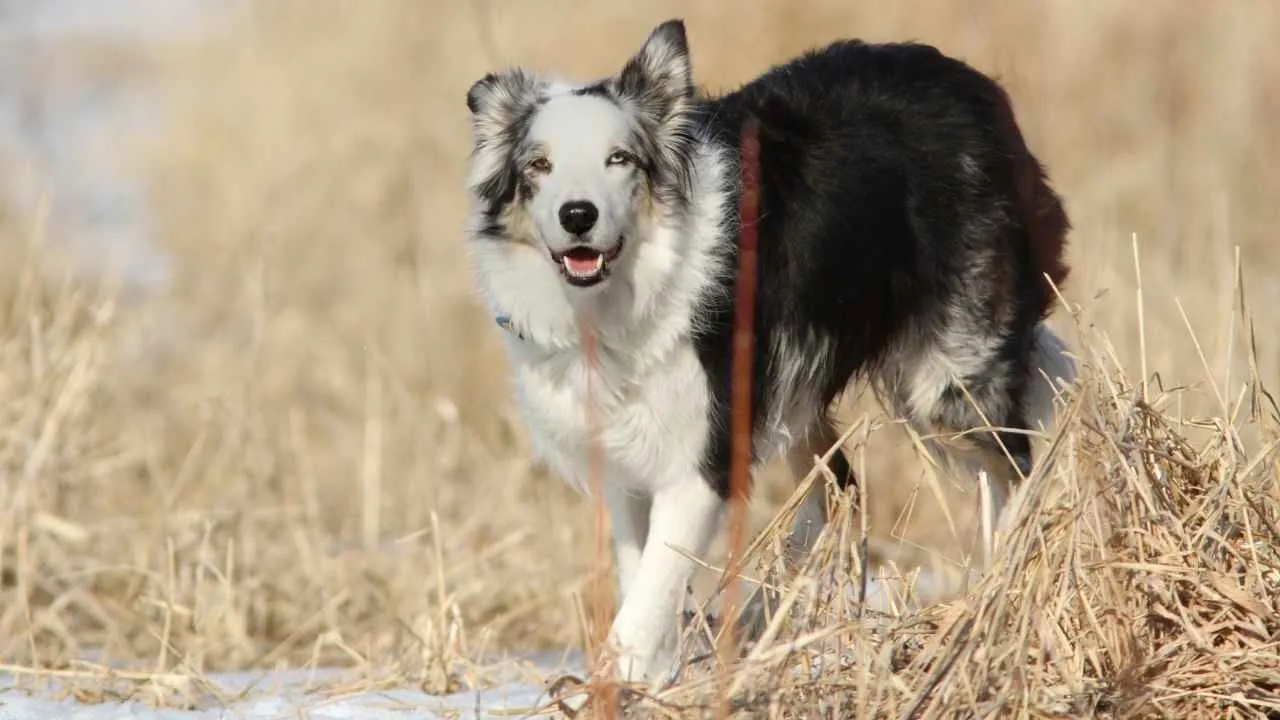
Height: 18–23 inches | Weight: 40–65 pounds
Originally bred as hardworking herders, Australian Shepherds still carry a strong drive to get the job done and make their people proud. Their tails can be naturally bobbed or full-length, though most puppies have their tails docked early on—a practice that remains a bit controversial.
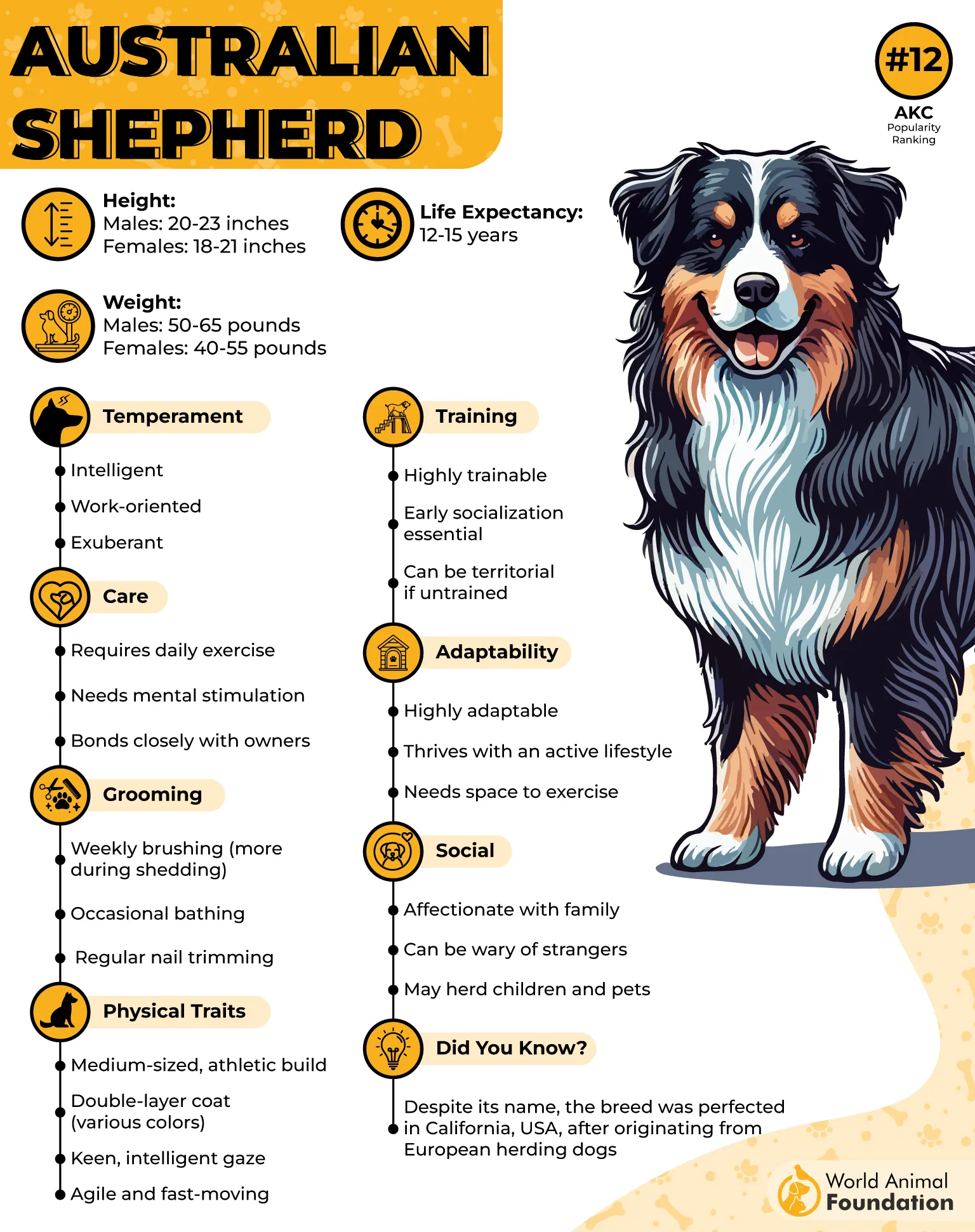
Australian Shepherds aren’t just herding legends—they’re the all-around athletes of the dog world. Whether they’re rounding up sheep or ducks, these dogs do it with style, speed, and that signature Aussie enthusiasm.
Protective and smart, these medium-sized dogs thrive in active families who keep them busy with plenty of exercise and mental challenges.
Why Aussie Shepherds rock the herding game:
Naturally skilled at managing livestock, including those tricky ducks
Loyal and protective, making them great family guardians
Need lots of activity—think hikes, fetch, and learning new tricks
Thanks to their herding roots, Aussies often have a strong prey drive and absolutely love games like fetch and Frisbee. But beware—they might also chase anything that moves: kids, cats, cars, and even wheeled things like scooters, bikes, or golf carts.
With such a high-energy lifestyle and playful temperament, Aussie owners need to pay close attention to their dogs’ joint and hip health to keep them moving strong and happy through every stage of life.
Aussie vibe: “Ready to work, play, and love you fiercely—all day, every day.”
5. Samoyed
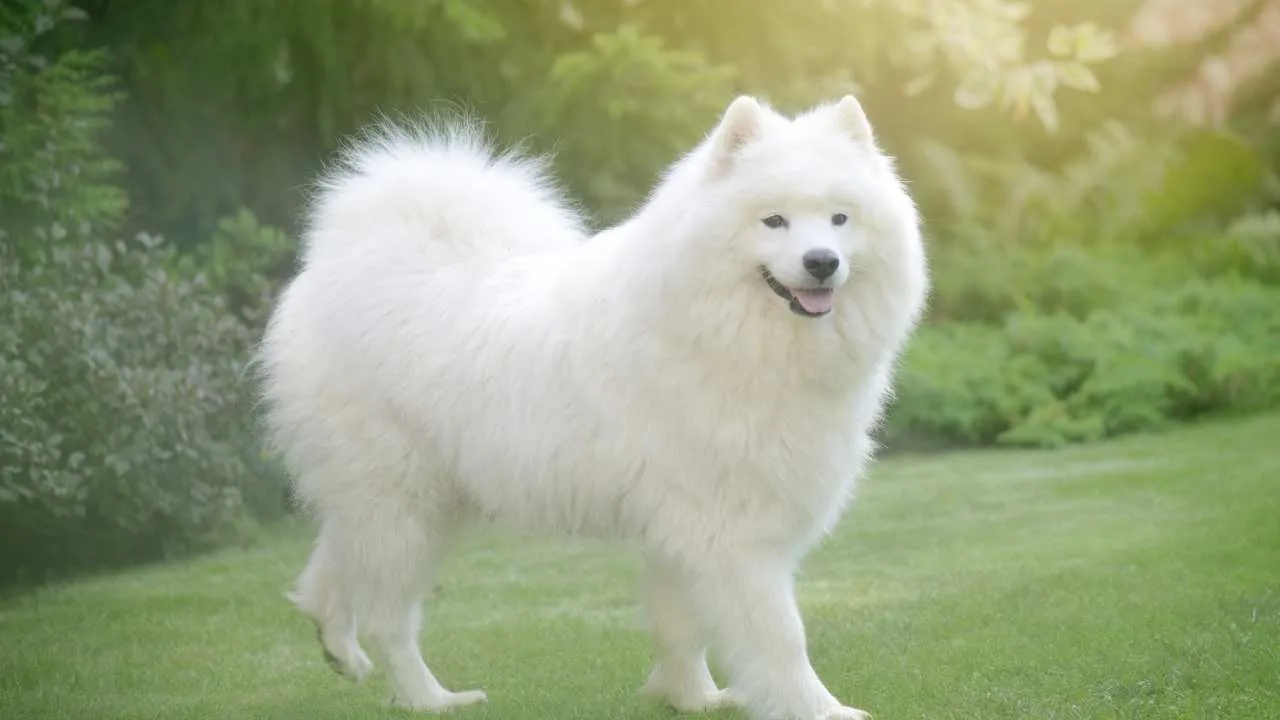
Height: 19–23.5 inches | Weight: 35–65 pounds
Originally bred for herding reindeer and pulling sleds in Siberia, these dogs have brains and brawn to match their stunning looks.
Developed in the icy Siberian town of Oymyakon—where temperatures can plummet to a staggering minus 60 degrees—Samoyeds sport that iconic thick white coat to battle brutal weather with style and warmth.
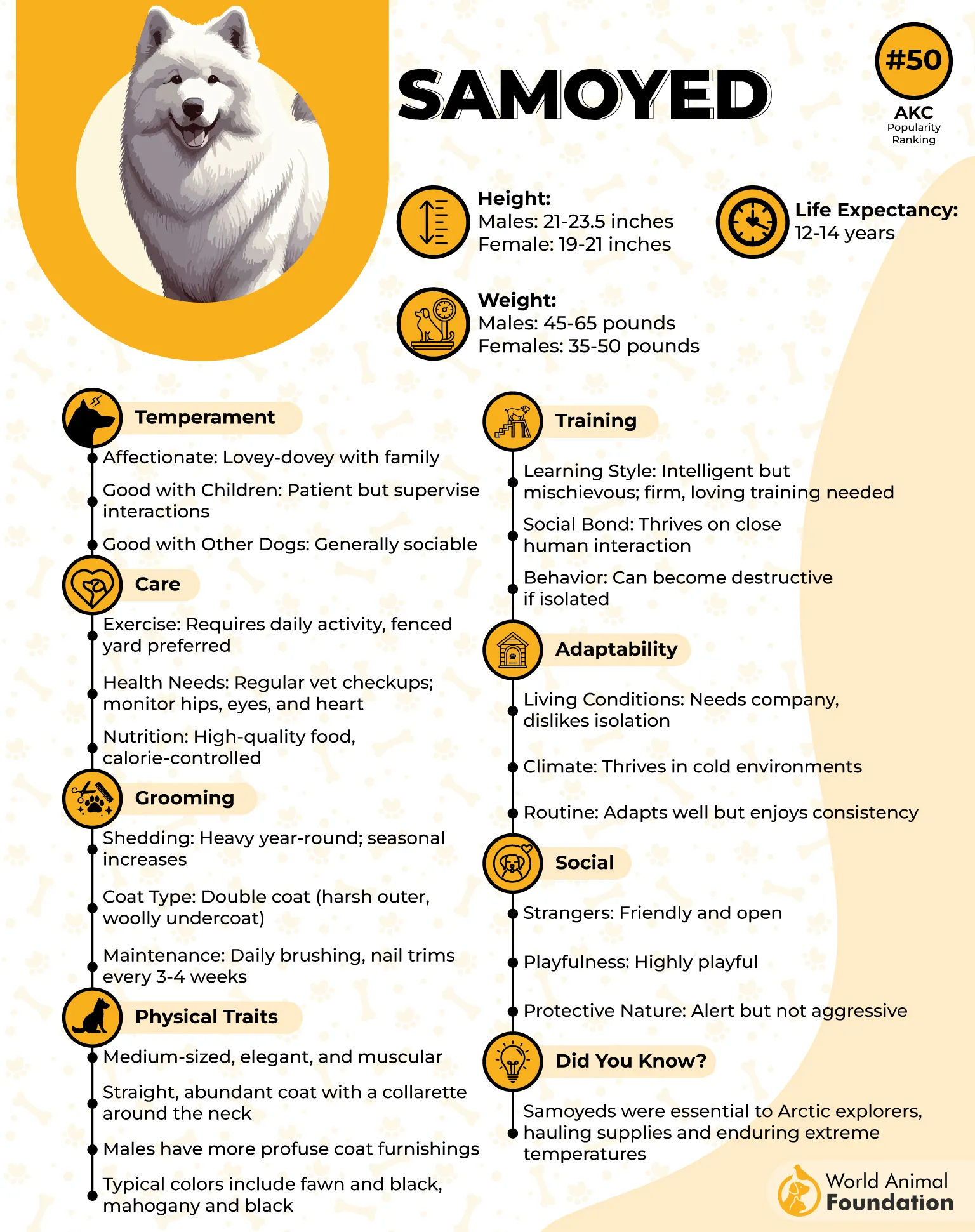
Samoyeds may be on the smaller side compared to some giants, but they pack serious strength and personality. These fluffy social butterflies are bursting with energy and thrive on love and attention. =
Their gentle and friendly demeanor makes them great family dogs, but don’t let that fool you — these large dogs are hardworking and love having a job to do, especially if it involves a little herding or pulling.
Why Samoyeds stand out:
Friendly and social—everyone is a friend until proven otherwise
Tough workers who thrive in cold climates and outdoor activities
They literally smile — their “Sammy smile” is a legendary mood booster
As per WebMD, their luxurious coat comes in two layers: a long, harsh outer coat and a soft, thick, woolly undercoat that keeps them cozy no matter how cold it gets. Because of their impressive fur, Samoyeds need regular grooming to keep their coat in tip-top shape.
6. Shetland Sheepdog
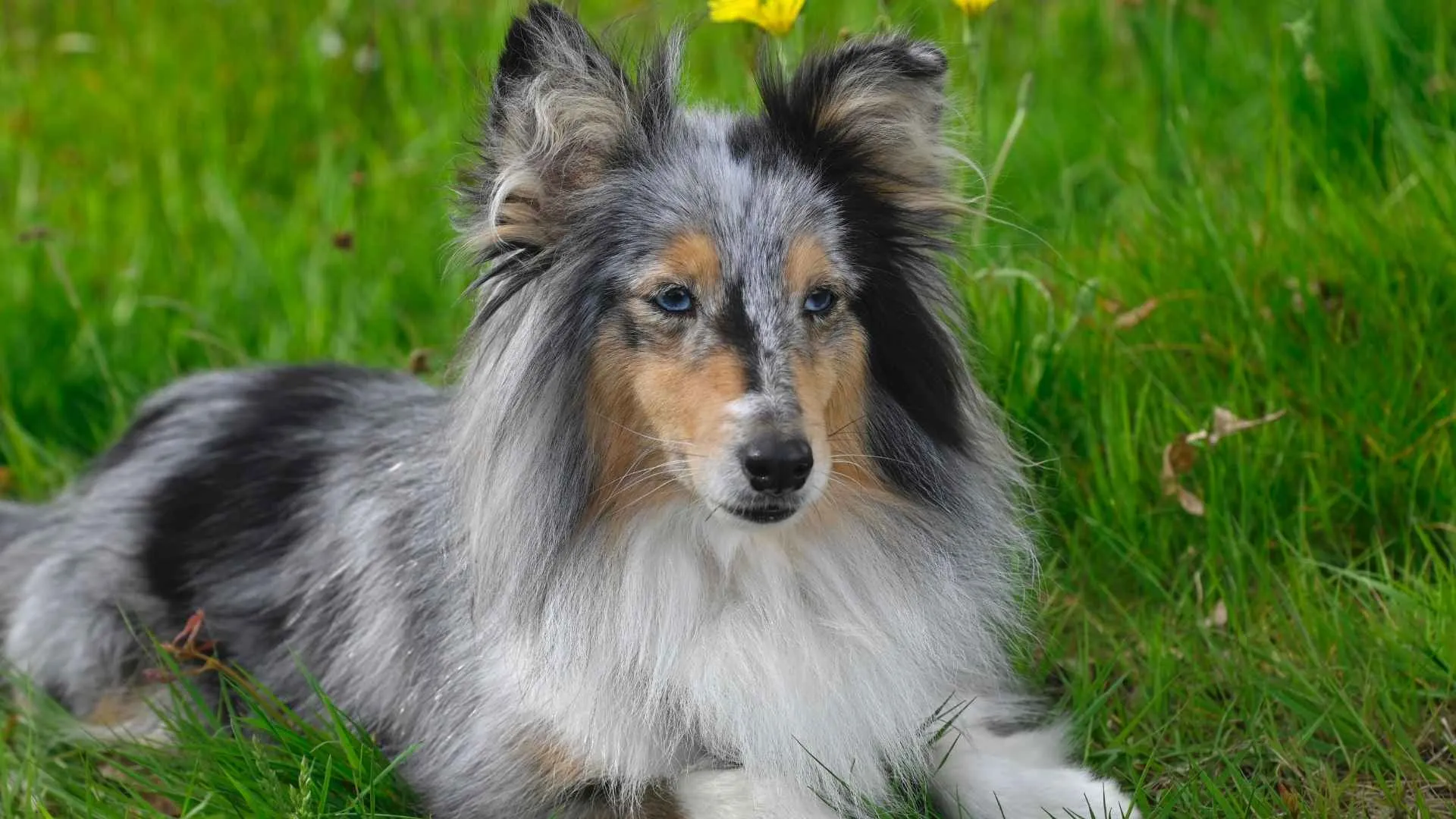
Height: 13–16 inches | Weight: 14–27 pounds
Don’t let their small size fool you—Shetland Sheepdogs, or Shelties, are powerhouses when it comes to smarts and agility.
Originally bred to herd sheep in the rugged Shetland Islands, these pups excel in obedience, agility, and herding trials, making them stars of the dog sports world. According to the AKC, their bright, eager personalities and quick learning make training a breeze.
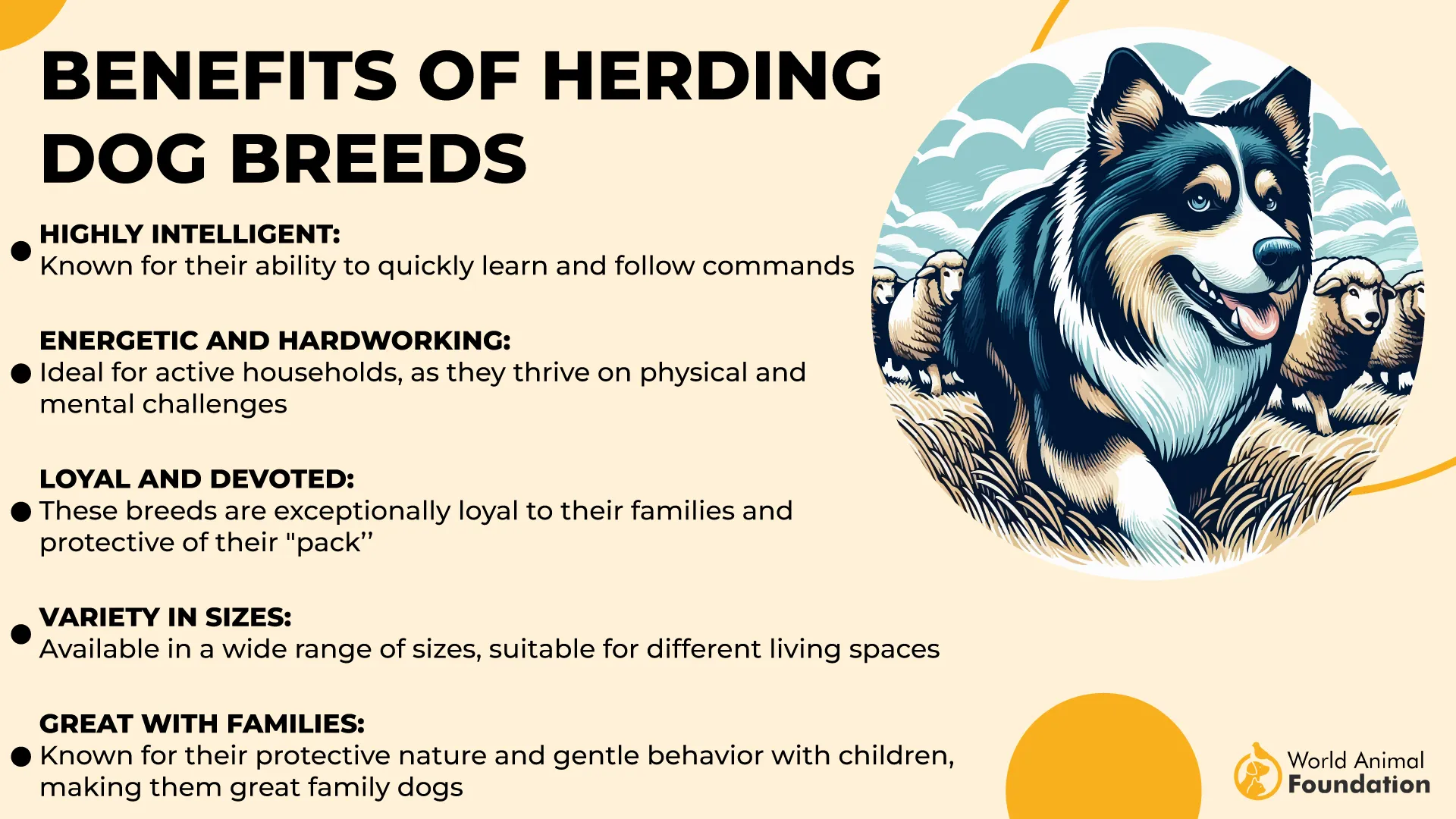
Often mistaken for miniature Collies, Shelties—the affectionate nickname for Shetland Sheepdogs—are actually a distinct breed, specially developed to thrive in the rugged Shetland Islands.
With their signature wedge-shaped heads, perky erect ears, and long, straight coats that come in a variety of stunning color combos, Shelties are as beautiful as they are brainy. They’re beloved family dogs thanks to their gentle nature and eagerness to please.
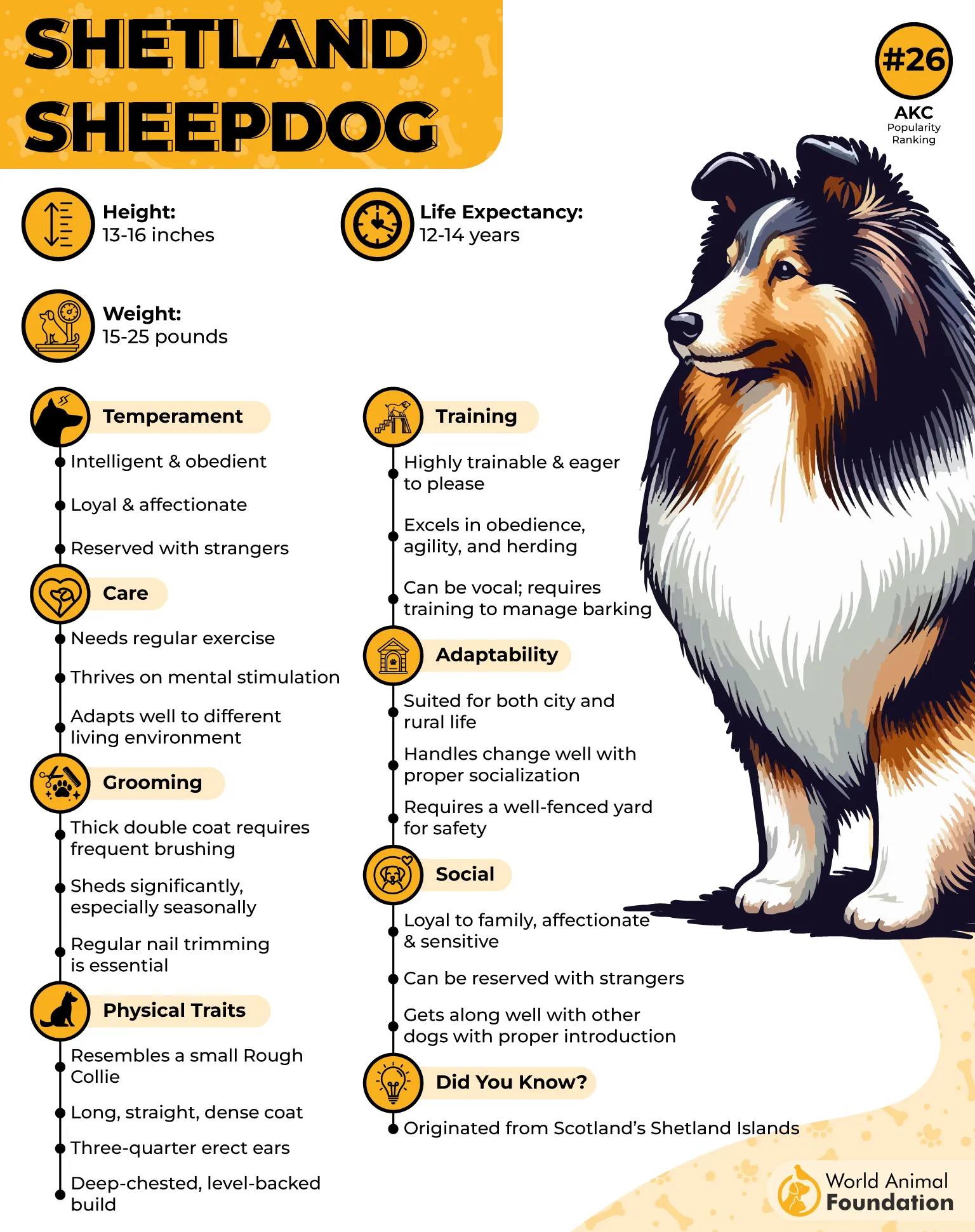
Why Shelties are herding royalty:
Exceptionally intelligent and eager to please their humans
Agile and fast, perfect for dog sports and active families
Loyal and affectionate, often forming strong bonds with their owners
Their stunning, fluffy coat and sweet face make them a total crowd-pleaser
But don’t let that fool you—they’re true working dogs at heart who prefer action over lounging on the couch. To keep these energetic pups happy and well-behaved, they need plenty of physical exercise and mental challenges.
Shelties are known to be quite the chatterboxes, barking not just to alert their humans but also when they’re excited or curious. Staying true to their herding roots, they can’t resist chasing anything that moves—whether it’s a squirrel, a ball, or even a runaway sock!
Sheltie motto: “Small package, big hustle!”
7. Australian Cattle Dog
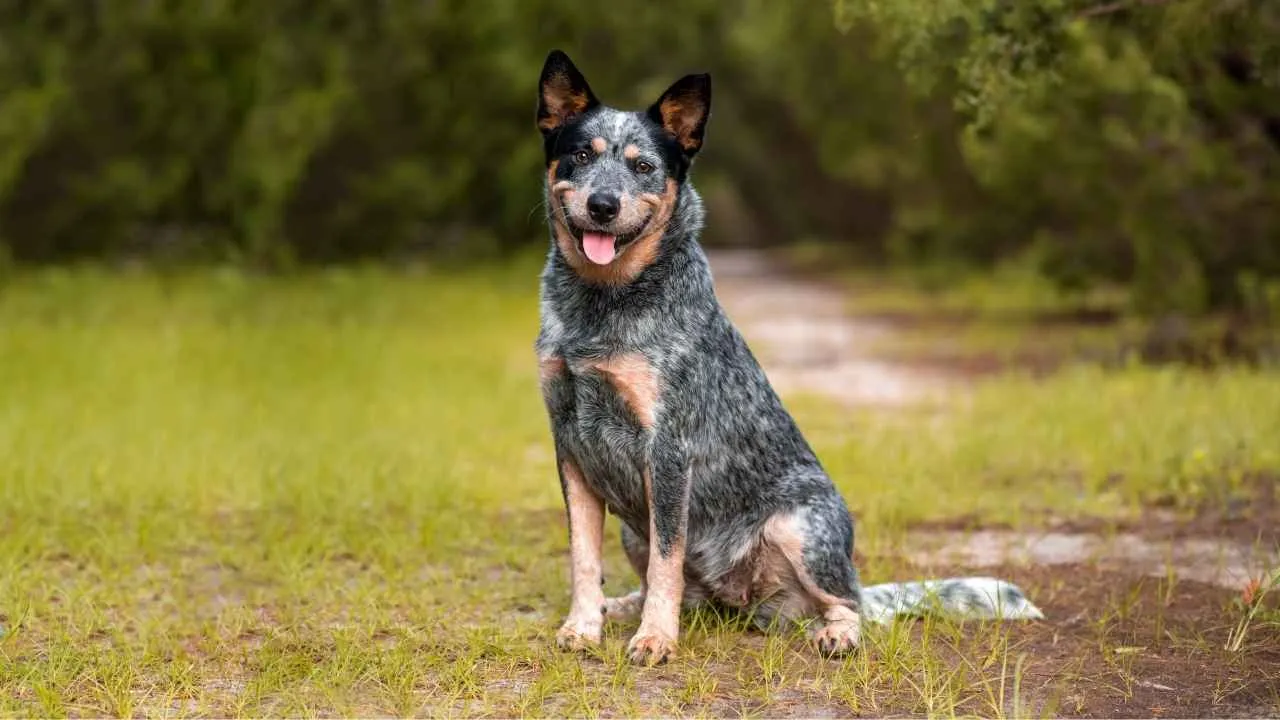
Height: 17–20 inches | Weight: 35–50 pounds
Meet the Australian Cattle Dog — the herding world’s equivalent of a laser-focused ninja. These hardworking pups earned their nickname “Heelers” because they keep cattle and sheep moving by nipping at their heels (no toe-shoes allowed).
Originally bred to herd by nipping at livestock’s heels, the Cattle Dog’s natural instinct means it might nip at running kids, so early socialization and supervision are key.
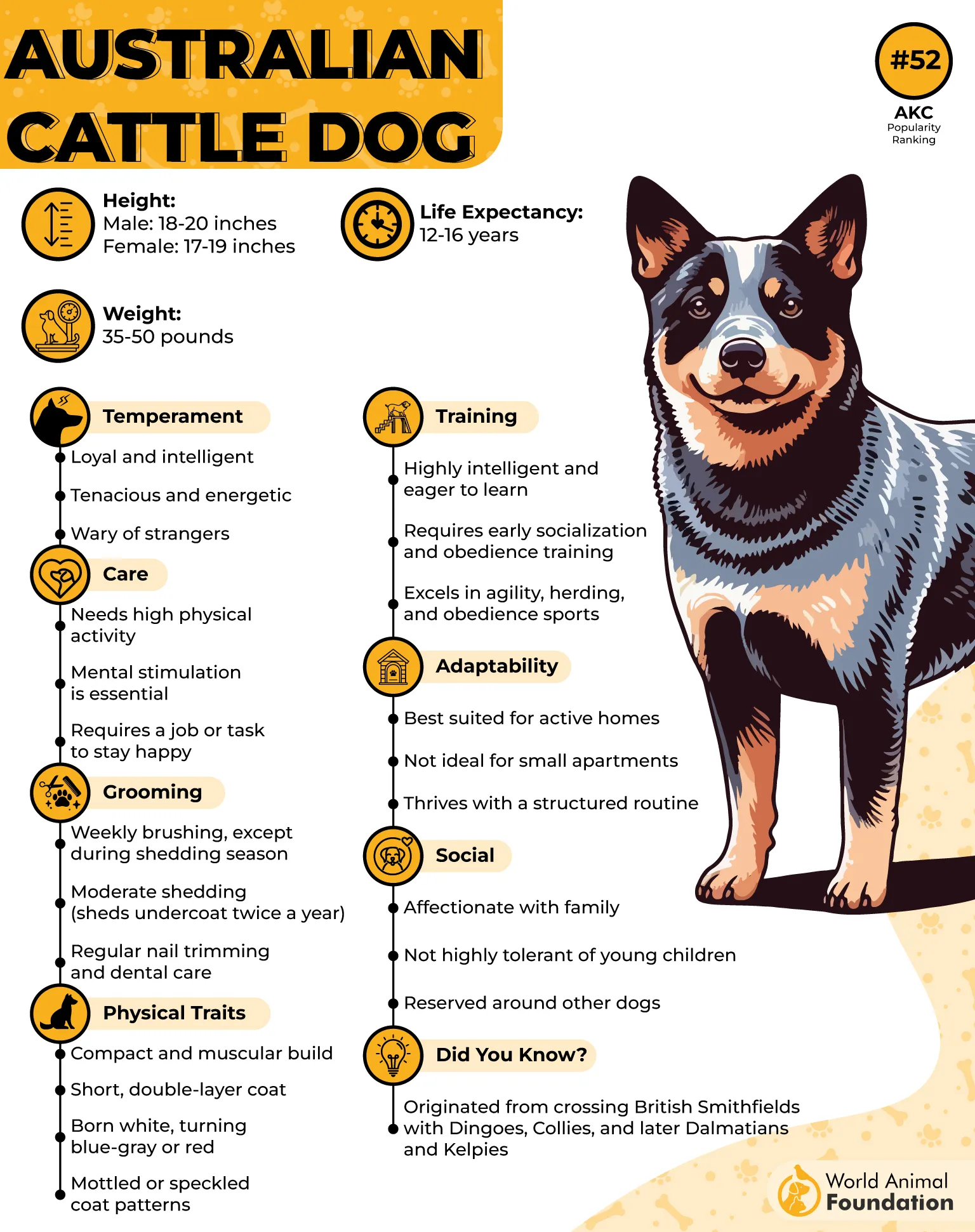
This breed forms deep bonds with its owners and can be quite protective of both family and belongings. Whether you choose a fiery Red or a cool Blue, this dog is built for action, ready to wrangle your ducks, sheep, or just about anything that needs a little moving along.
These dogs are as smart as they are tough, with stamina to match. They don’t just herd; they strategize, assess, and execute with precision — all while maintaining a charmingly feisty attitude. Expect a loyal sidekick who thrives on challenge and won’t quit until the job is done.
Why Aussie Cattle Dogs are the MVPs of herding:
Built for endurance — this breed can outlast just about anything
Sharp as a tack and quick on their paws — problem-solving is their jam
Fiercely loyal and protective, making them excellent watchdogs
As per Wikipedia, the Australian Cattle Dog, like many working breeds, is a powerhouse of energy and smarts with a strong independent streak. This clever pup thrives on structured training, especially when it’s fun and mentally stimulating.
Without plenty of exercise, companionship, and a “job” to tackle, these dogs can get restless. For those not herding cattle, dog sports, learning tricks, or other brain-and-body challenges are a must to keep them happy.
Aussie Cattle Dog vibe: “You bring the ducks, I’ll bring the hustle. Let’s get moving!”
Conclusion
When it comes to dog breeds that herd ducks, most people think of classics like the Border Collie, Australian Shepherd, but there are many other dogs like the German Shepherd Dog, Belgian Malinois, or Great Pyrenees. These beautiful dogs are not only loyal but naturally protective—excellent guard dogs for your flock. While some have a high prey drive, a young dog trained properly can learn to watch, not hurt, free-range chickens, geese, or other animals.
Breeds that play fetch often do well, as they respond to commands and group movement, perfect for managing working sheep or ducks without damaging delicate flight feathers. Even a chocolate Lab, though not traditional, can be helpful in a calm setting. At night, these dogs bring rest and security to your group, especially females who tend to be gentle. With training and care, most dogs can adapt to duck herding—and give your birds the hope of peace on the pasture.


